
Annual Forbs Around Las Vegas, Vegetation Around Las Vegas
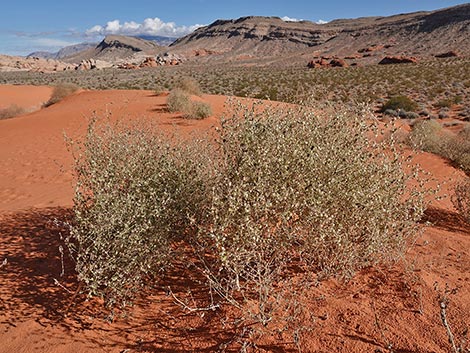 |
General: Desert Twinbugs (Dicoria canescens) is a curious annual forb or subshrub that grows in sandy habitats, often forming thickets. When the plant sprouts, the leaves are opposite, long and narrow (lanceolate), and with notched edges. As the plant grows, the leaves become rounded, and the leaves and stems become stiff hairy. Highly variable. Desert Twinbugs is in the Sunflower family, but the yellow flowers are small and inconspicuous, and as the seeds develop, a papery hood grows over them that ages to red.Desert Twinbugs is a fairly common component of sandy vegetation communities in the Lower Sonoran (Creosote-Bursage Flats) and Upper Sonoran (Mojave Desert Scrub) life zones. Around Las Vegas, look for Desert Twinbugs on sand dunes, such as those in Mojave National Preserve and Gold Butte National Monument. Family: Sunflower (Asteraceae) Other Names: Bugseed. |
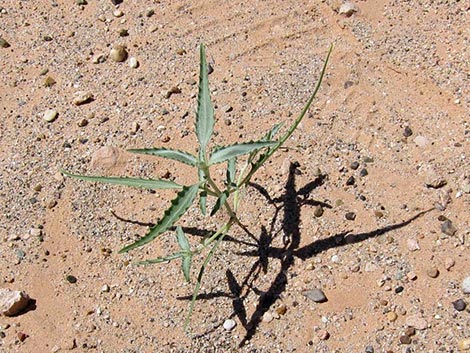 Young leaves long and narrow |
Plant Form: Annual subshrub, upright. Height: To almost 3-ft tall. Stems: Green, erect, with stiff hairs, sometimes also with coarse, erect hairs. Leaves: Young leaves opposite, long and narrow (lanceolate), and with notched or wavy edges. As the plant grows, leaves become shorter, rounded, and stiff hairy. Highly variable. Petiole 5 to 20 mm. Young blades to 12-cm long, 3-mm wide. Lower leaves opposite, upper leaves alternate; 3-nerved, about 3-cm diameter. Leaves with stiff hairs, sometimes with coarse, erect hairs, may be gland-dotted. Flowers: Inflorescence: yellow sunflowers small and inconspicuous. Flower heads disciform (no "petals," just the button center), borne singly or groups of 2-3. Peduncle short (1-3 mm); involucre small (3-5 mm diameter), saucer-shaped. Outer phyllaries persistent, expanding to become hood-shaped surrounding the seed. |
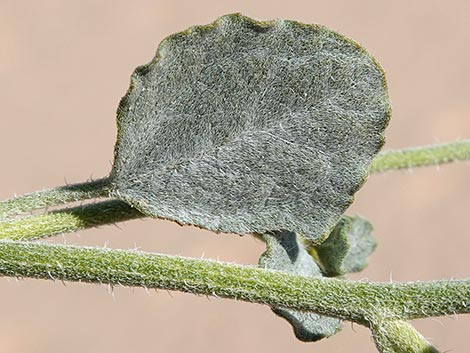 Older leaves rounded with stiff hairs |
Fruits: Cypselae, 3–8 mm diameter. [SIP-sel-e: a dry single-seeded fruit formed from a double ovary of which only one develops into a seed.] Seed small. Habitat: In southern Nevada, mostly found on sand dunes and sandy soils, but also alkaline flats and sandy washes. Elevation: To about 4,000 ft. Distribution: Southern California to Colorado and south into northern Mexico. Comments: |
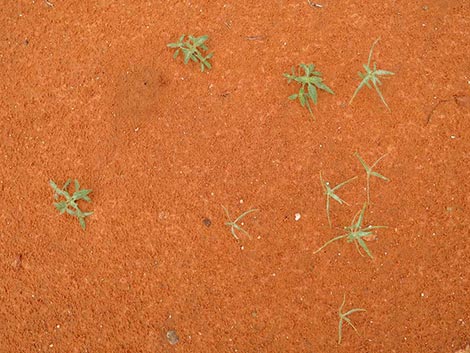 |
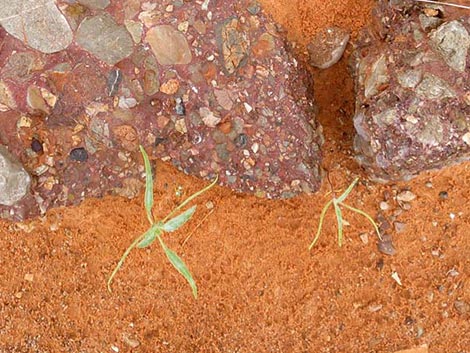 |
 |
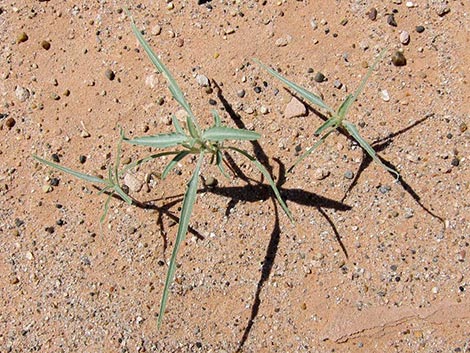 |
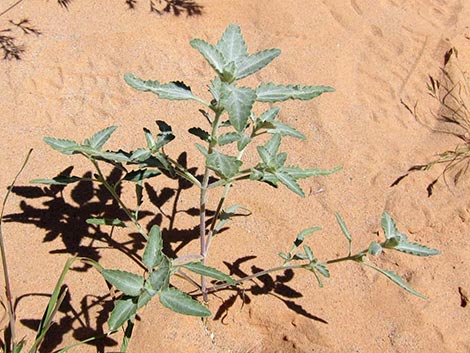 |
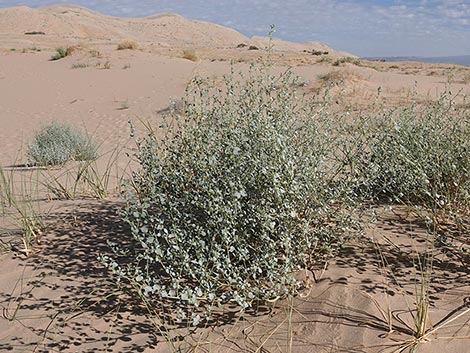 |
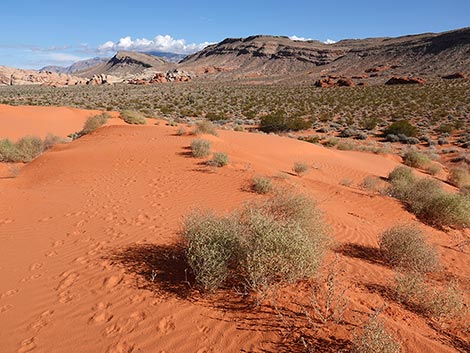 |
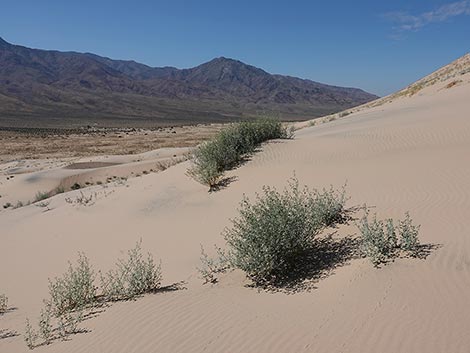 |
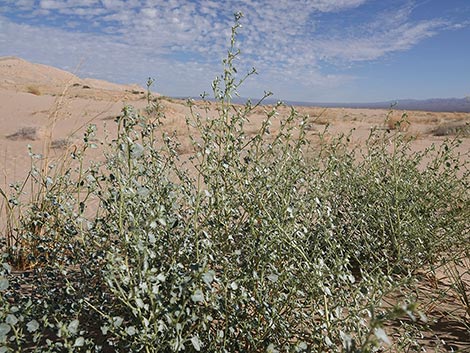 |
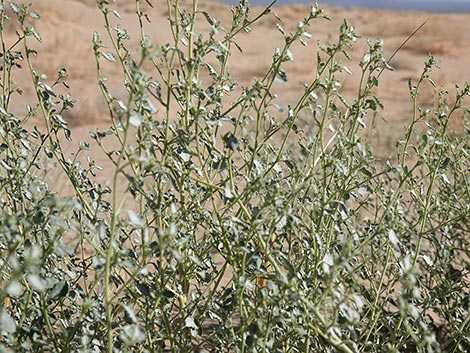 |
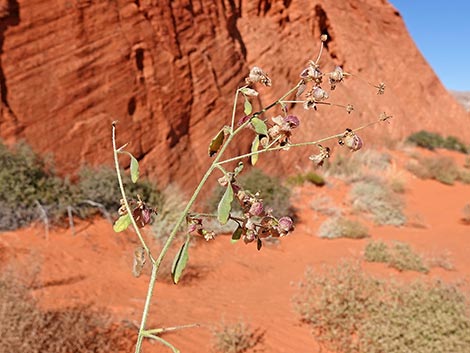 |
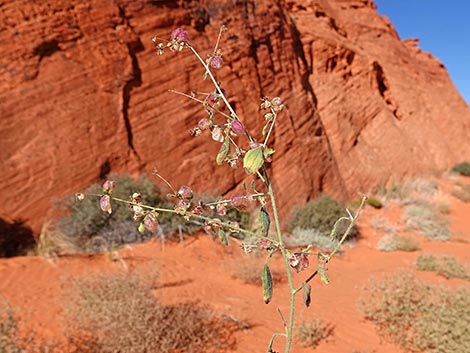 |
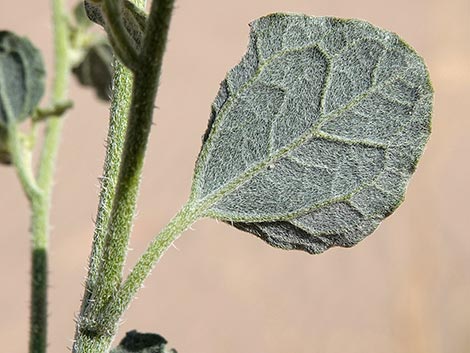 |
 |
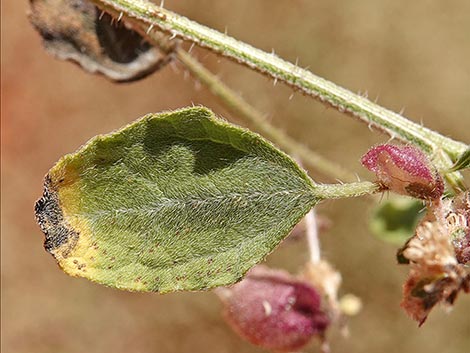 |
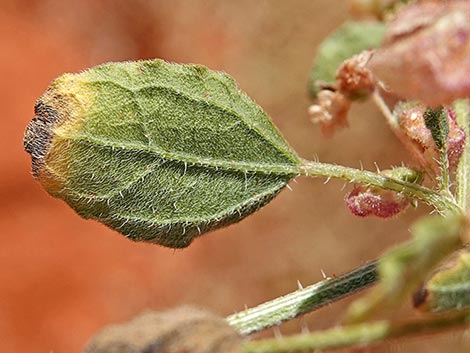 |
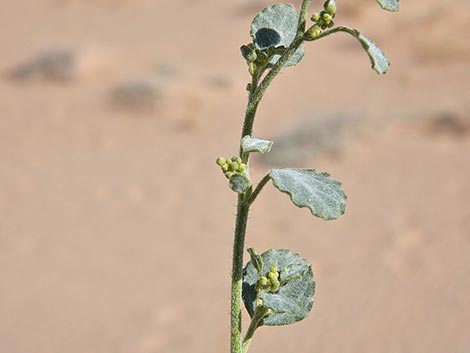 |
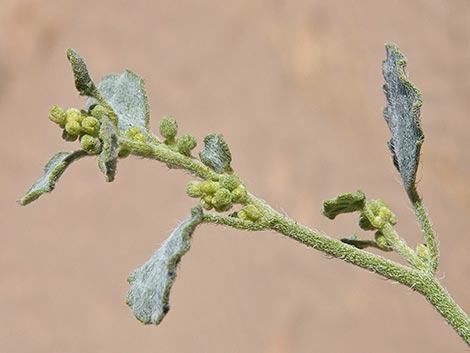 |
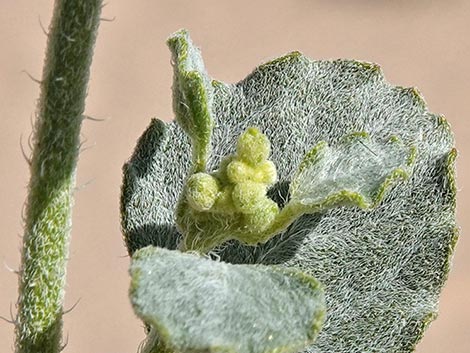 Tiny flower buds |
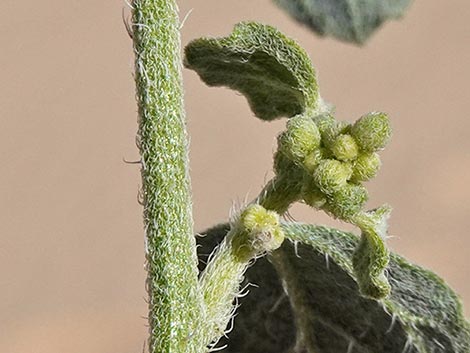 Tiny flower buds |
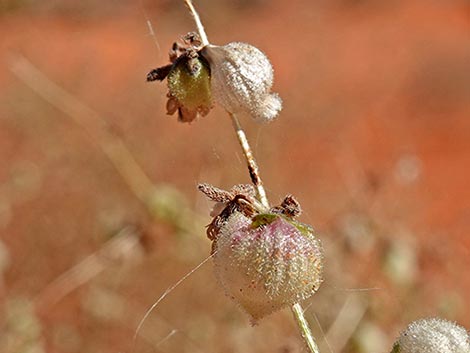 Flower become surround by a membranous hood, which ages to red |
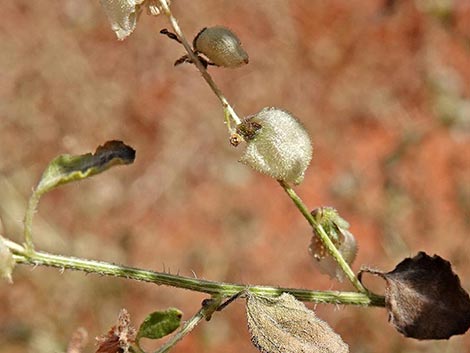 Flower become surround by a membranous hood, which ages to red |
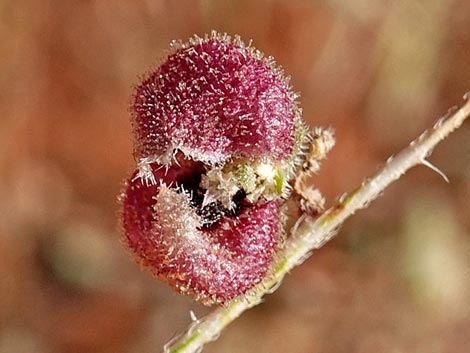 Membranous hood becomes red with age |
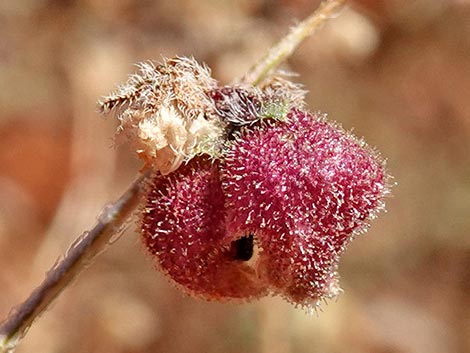 Membranous hood becomes red with age |
Note: All distances, elevations, and other facts are approximate. Names generally follow the USDA database.
![]() ; Last updated 250721
; Last updated 250721
| All Annual Forbs | Plant Species Index | Glossary | Copyright, Conditions, Disclaimer | Home |